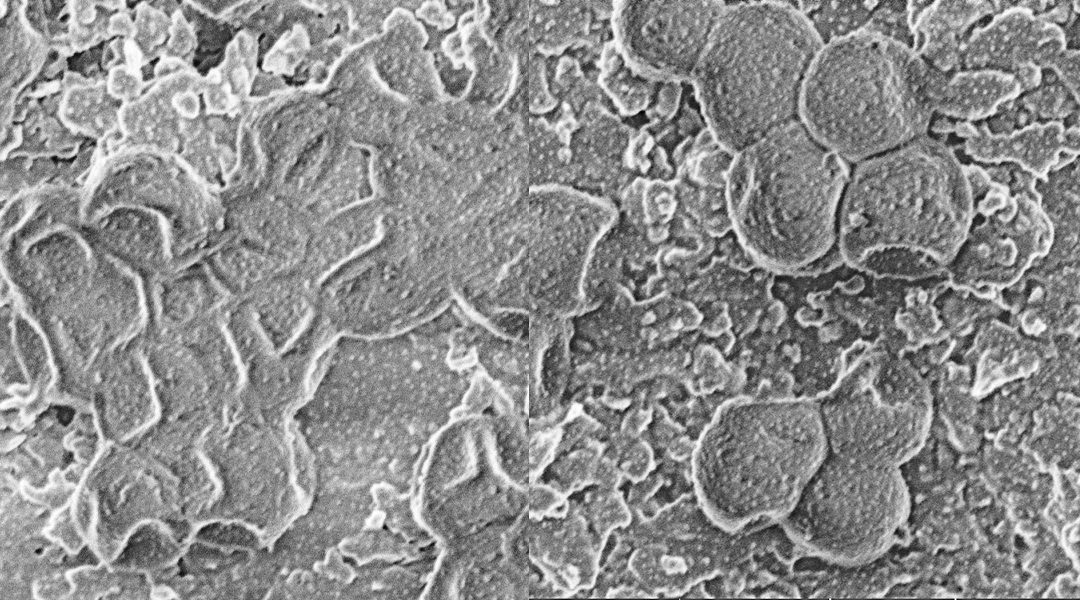The research and development of antibiotics has been intense since their discovery in the early part of the past century.
However, in the last decade, there has been a dramatic shift in their effectiveness. More and more bacterial strains have developed resistance to antibiotics, and these resistant microorganisms are able to withstand the activity of commonly used antimicrobial drugs in a way that standard treatment becomes ineffective and infections persist. This increases the risk of their spread, which is clearly seen in clinical practice supported by World Health Organization annual reports.
The development of resistant strains is a natural phenomenon that occurs through selective pressure on the population of microorganisms. It is no surprise, then, that there is a general increase in the number of resistant microorganisms all around the world, although specific patterns vary considerably across countries.
Nanomaterials include a variable range of colloidal nanoparticles not only in terms of chemical composition but also in terms of shape and size, which significantly affect the desired properties — their effect and biocompatibility, in particular. These properties can be customized during or after the preparation of nanoparticles according to the intended application.
Basic research includes the study of the relationship between morphology and physico-chemical and biological properties of nanomaterials, which form the theoretical basis for the design and synthesis of new generations of nanomaterials having specific applications in medicine. Due to their dimensions, nanoparticles are “getting close” to their target biological entities.
Current research in the field of nanomedicine focuses primarily on the rational transport of diagnostic and therapeutic agents to eliminate side effects and precisely target the desired location in the organism. Applications are not only available in human medicine but also in veterinary medicine and agriculture.
Dr. Smerkova and her colleagues from Mendel University in Brno, Czech Republic, have recently discussed current trends in the synthesis, development, and applications of advanced nanomaterials as alternatives to antibiotics. Although the active targeting of pathogens is a relatively emerging area, it has the potential to provide many benefits, including the improvement of therapeutic outcomes due to selectively targeting pathogens while sparing the human microbiome.
These aspects are inevitably associated with decreased side effects and reduction of socio-economical losses, and thus represent the golden grail of antibacterial treatment.
“Besides these primary impacts, the fight against bacterial biofilm formation represents an important challenge for targeting strategies. The nanoparticles’ unique physicochemical properties allow them enhanced penetration through biofilm and to kill ‘shielded’ bacteria by direct contact with intrinsic antibacterial nanomaterial or by antimicrobials delivery,” explained Dr. Smerkova.
The targeting of intracellular pathogens surviving in “hijacked” macrophages is another special assignment of antimicrobial nanoparticles or nanocarriers loaded with antibiotics. On the other hand, due to their multicomponent and complex nature, actively targeted nanoparticles require a comprehensive understanding of their in-vivo stability, possible off-target effects, or loss of targeting ability due to protein corona formation and intracellular and organismal fate.
Dr. Smerkova also stated: “For further acceleration of the development in the field of efficient targeting ligands for antibacterial nanoparticles, detailed knowledge of pathogen-specific surface structures needs to be gathered. In addition, high-throughput methods capable of screening for similarities with surface structures of common or uncommon members of the microbiome to achieve maximal selectivity are of an utmost interest.”
Since science is experiencing the advent of superfast computational units capable of such screenings, it can be expected that virtual screening software will pave the way for novel targeting ligands based on a broad spectrum of various biomolecules. This would be a major leap forward and towards ligands that help generate an inexhaustible spectrum of novel antibacterial nanomaterials that could be used to combat the global threat posed by antibiotic-resistant bacteria.
Article written by Kristyna Smerkova, Kristyna Dolezelikova, Lucie Bozdechova, Zbynek Heger, Ludek Zurek, and Vojtech Adam
Reference: Kristyna Smerkova et al. ‘Nanomaterials with active targeting as advanced antimicrobials.’ WIREs Nanomedicine and Nanobiotechnology (2020). DOI: 10.1002/wnan.1636

















